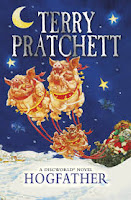It’s been a week and my mind is still turning over the ideas inherent to Rob Hart’s 2019 The Warehouse. Talk about creamy brain candy. Spinning a (fictional?) Amazon-esque future into an Adam-Smith, late-game, capitalist scenario, the novel raises a huge number of questions that touch upon the majority of aspects of 21st century existence in ways we consider sacred. Is it as rigorous as it could have been plot-wise, perhaps not, but what what’s there is inciteful enough—in a good way. (It’s also extremely insightful, in case you thought that was a slip.)
The Warehouse follows the lives of three people, leading up to a key moment in the history of The Cloud. An ultra-mega corporation unlike any the world has ever seen, The Cloud started as an Amazon-esque online shopping portal, but evolved into a global, corporate entity unlike humanity has ever seen. Through the hard work and acumen of its founder and leader, Gibson Wells, the company finds its fingers not only in almost every key pie that consumers have the possibility of spending money on, but also in the government organizations which regulate and deliver some of our most valued services and utilities.











